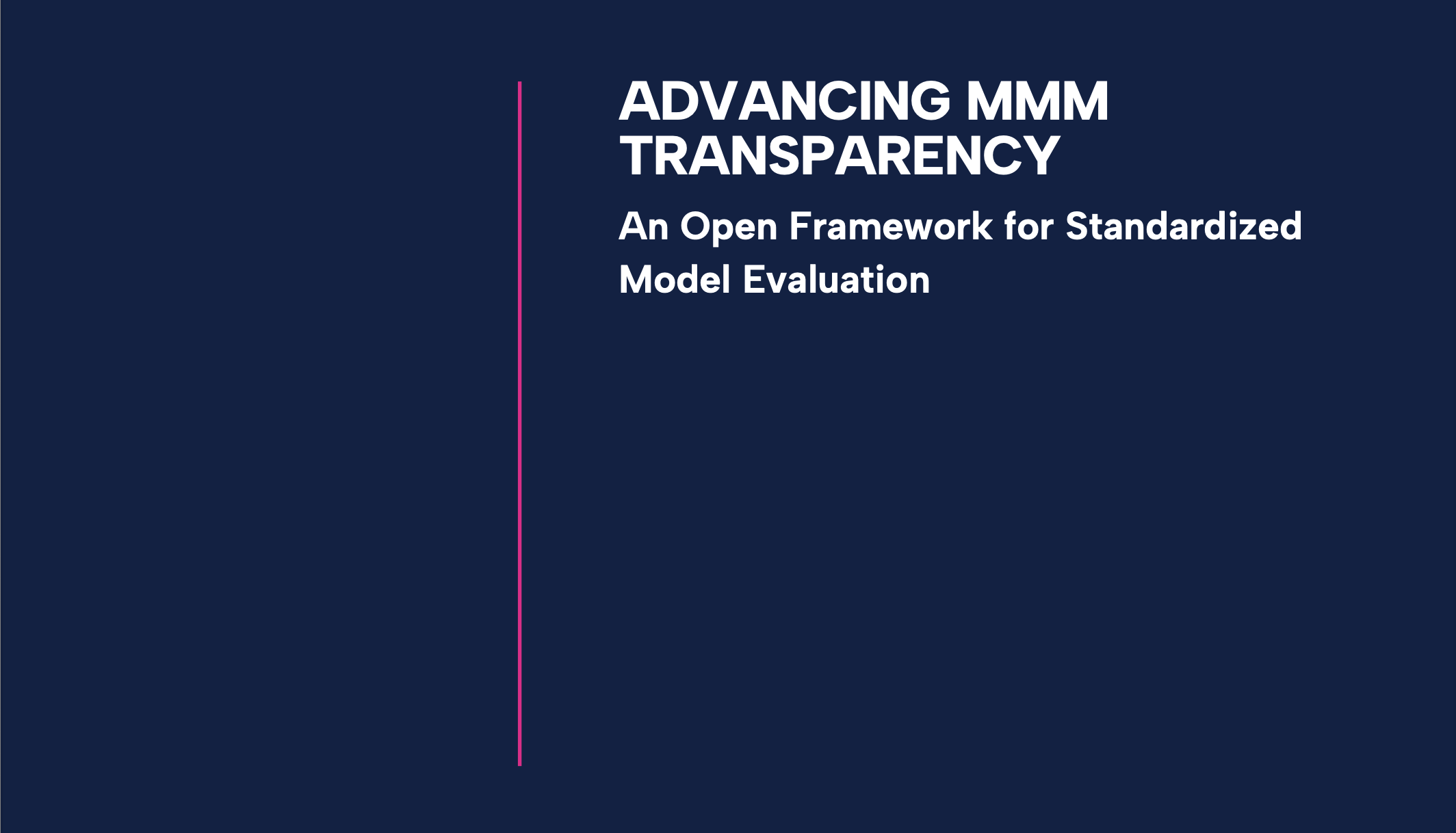In today’s digital-first landscape, marketers are swimming in data, making it essential to have tools that cut through the noise. Two prominent tools — media mix modeling and marketing mix modeling (both known as MMM) — have become critical in helping brands refine their marketing strategies, understand their return on investment (ROI), and optimize their performance.
But let’s be clear: while the names sound similar, these models serve distinct purposes in marketing analytics. Media mix and marketing mix modeling are not one-size-fits-all, so let’s dig into the details, strengths, and limitations of each and figure out when to use one (or both) for your brand.
Media Mix Modeling: Laser-Focused on Media Effectiveness
Let’s start with media mix modeling. It’s all about answering a pretty direct question: “Which media channels are driving the best results?” This model doesn’t try to look at everything in your marketing universe; instead, it zeroes in on individual media channels — TV, online or social media, for example — and shows how each one contributes to specific goals like brand awareness, engagement, or conversions.
How Media Mix Modeling Works
Media mix modeling uses historical data to reveal relationships between media spend and outcomes, often based on statistical methods. Though it’s retrospective, this data can be fed into models to make future predictions, giving marketers something actionable to work with.
Advantages of Media Mix Modeling
- Channel-Specific Insights: By isolating media channels, this model reveals exactly where your ROI is highest. Although solutions like Mutinex GrowthOS now also provide this level of granularity in a marketing mix model. This is essential for fine-tuning your overall marketing strategy.
- Short-Term Analysis: Great for campaigns that need fast adjustments in real-time. Mutinex GrowthOS also provides a campaign view.
- Low data inputs: No need to track every marketing variable; this method works with data limited to media activities.
Limitations of Media Mix Modeling
- Narrow Focus: It doesn’t account for other marketing elements like pricing or promotions, meaning it’s not a complete view.
- Short Data Window: Often focused on recent data, so it may miss how media campaigns impact long-term goals like brand loyalty.
Media mix modeling is perfect when you need fast, specific insights on media performance — but don’t expect it to tell you the full story.
Marketing Mix Modeling: A Big-Picture Approach to Your Marketing
Unlike media mix modeling, marketing mix modeling covers a wider set of variables, used to understand how different marketing activities like seasonality, promotions, and distribution, contribute to sales. It’s not just about media spend; this model brings in a different mix of measurable elements to your strategy. The typical marketing mix includes the 4 Ps:
Product, Price, Place, and Promotion.
How Marketing Mix Modeling Works
Marketing mix modeling combines historical data from every aspect of your marketing efforts, from sales to distribution. By analyzing all of these inputs, it provides a broad look at what drives your brand’s performance and helps you forecast what will work in the future.
Bespoke Models vs Generalised Models
Typically, a marketing mix modeling company will offer to build a model from scratch, designed to fit the customer’s brand and business state exactly — but this comes with sizable limitations when the business evolves to a new state and the model needs to be rebuilt to remove inherent bias. Mutinex avoids issues like these by using a generalized model that isn’t ‘overfit’ to a specific brand’s or business state and takes broader, more evergreen market dynamics into account — resulting in a more robust model.
The Open MMM Validation Framework

Advantages of Marketing Mix Modeling
- Holistic Analysis: This model doesn’t just tell you which media is working; it reveals how your whole marketing strategy ties together.
- Strategic Forecasting: Perfect for understanding the impact of longer-term investments and making smart budget decisions.
- Brand and Sales Growth: Offers insights into how factors like product quality or promotions contribute to the big picture.
Limitations of Marketing Mix Modeling
- Difficult Data Entry: often, MMM models can make data entry complicated. But a product like Mutinex DataOS solves this problem: it ingests data simply and quickly, allowing for clean, accurate data entry with minimal resource application.
- Slow to Produce Results: traditional MMM models can take longer to produce meaningful results. But with Mutinex’s GrowthOS product, using a generalized model, quick, tactical adjustments are possible for more immediate learning.
Marketing mix modeling is the way to go if you’re looking for a bird’s-eye view of everything impacting your brand’s performance. But be prepared for a deeper data dive.
Comparing the Two Approaches
Now that we’ve broken down each model, let’s put them side by side and see how they stack up in some key areas:
| Criteria | Media Mix Modeling | Marketing Mix Modeling |
| Scope of Analysis | Focused on media channels only | Takes the entire marketing mix into account |
| Data Requirements | Primarily media-specific data | Comprehensive data on all marketing elements |
| Time Frame | Short-term insights | Long-term, strategic perspective |
| Adaptability | Quick for short-term adjustments | Suited to long-term strategic decisions |
Media mix is your short-term solution for media insights, while marketing mix digs deep for long-term strategy.
When Should You Use Each Model?
Choosing between media mix and marketing mix modeling comes down to a few core factors: your campaign goals, the budget you’re working with, and how fast you need insights. Here’s a breakdown to help you decide:
When to Use Media Mix Modeling
If you’re trying to quickly optimize a specific ad channel or need real-time insights to inform an ongoing campaign, media mix modeling is the go-to. This approach is ideal when campaigns require fast (daily) pivots or when you need immediate, channel-specific insights.
When to Use Marketing Mix Modeling
In the past, marketing mix modeling might have been considered slow and cumbersome. But these days, whether you want to understand the long- or short-term effects of various marketing elements on your brand’s growth, new-generation marketing mix modeling solutions like those offered by Mutinex can help.
Can You Use Both?
Absolutely. However, with all of the speed and granularity offered by marketing mix models these days, a media mix model may not be worth the investment. Before deciding on a solution, create a list of requirements and do your research.
Modern market mix models perform many of the same functions as media mix models. Brands should consider all of their relevant requirements before committing to a media mix model..
In conclusion
While media mix and marketing mix modeling share some surface similarities, they’re built for different purposes. Media mix modeling is ideal for brands looking for quick, specific insights on media performance, especially when agile, short-term decision-making is a priority. Marketing mix modeling, on the other hand, supports a broader, more strategic view of all marketing elements — perfect for brands aiming for long-term growth. However modern models also support many of the functions of media mix models.
Understanding the unique strengths and limitations of each approach and your requirements allows you to choose the right modeling strategy to drive better business outcomes.
The bottom line? If you’re considering media mix modeling, you should also review market mix modeling given the developments in modern market mix models in favor of speed and granularity.
Want to know more about MMM? Ask to see Mutinex GrowthOS in action today.





